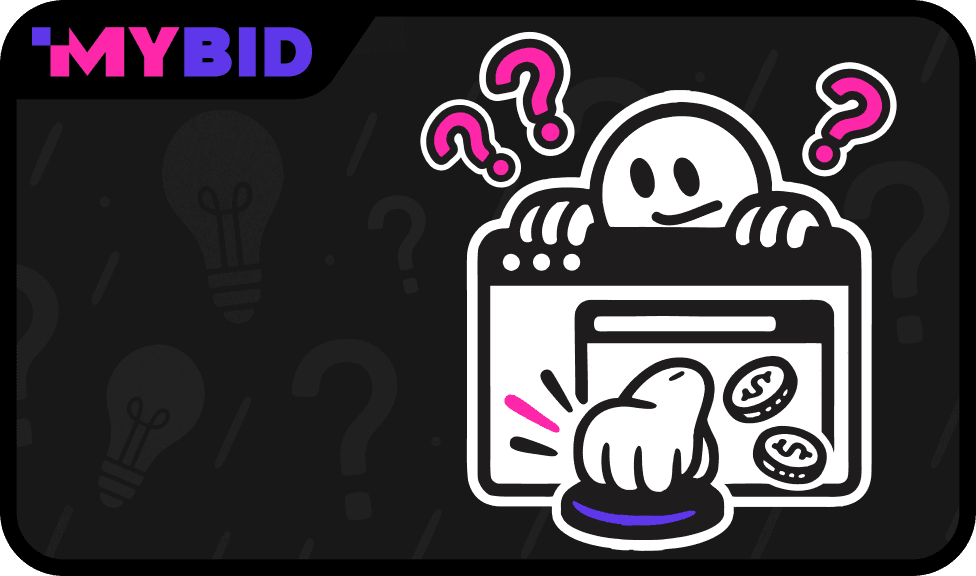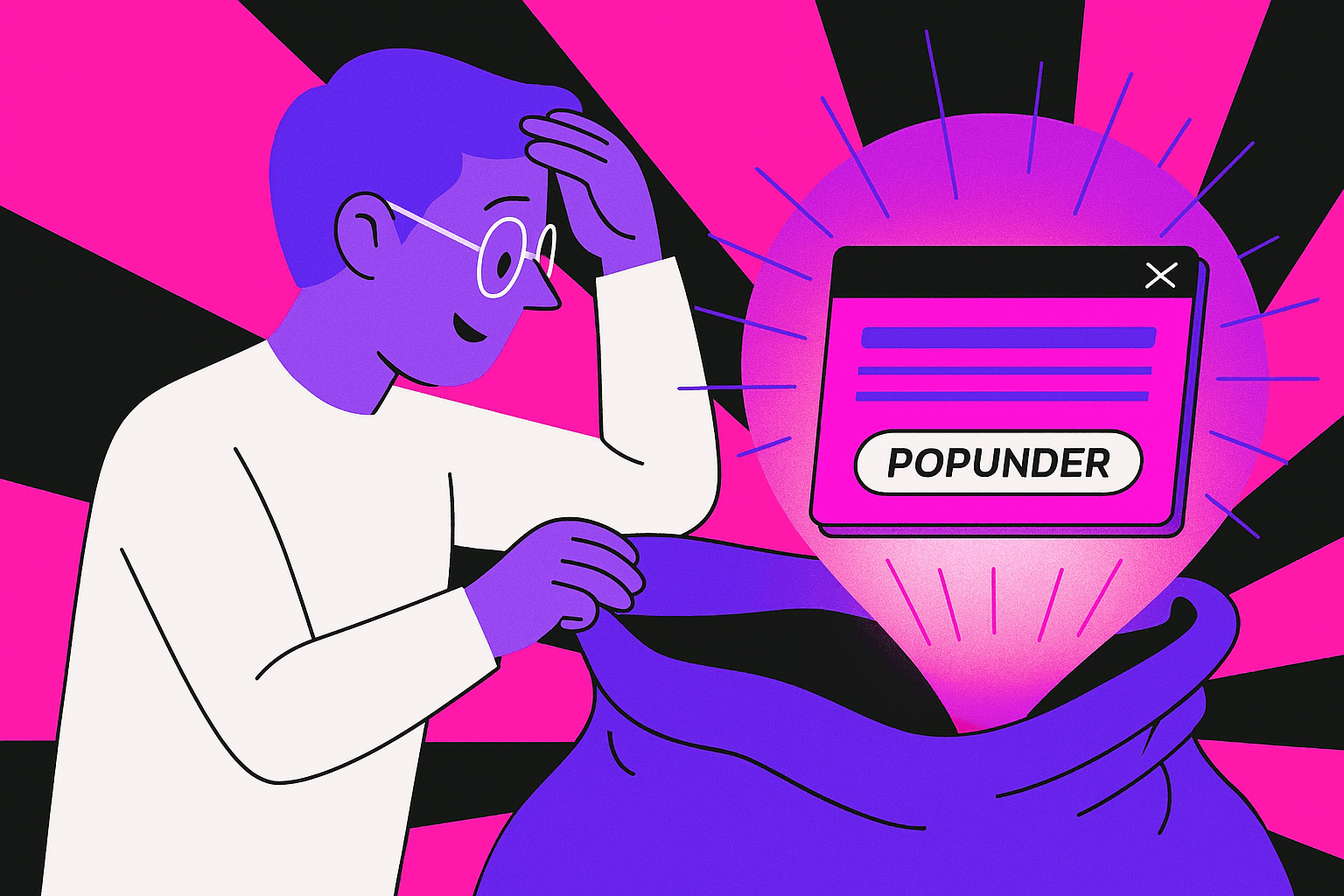
Popunder is an ad window that quietly opens behind the active browser tab. While the user keeps reading or watching a video, the ad stays “hidden”, yet it’s guaranteed to come into view once the main tab is closed. This format first appeared in the late 1990s and is still popular thanks to its low cost and the wide reach of so-called “cold” traffic.

In essence, Popunder looks like a regular ad page, but it launches in the background. A small JavaScript script triggers it: sometimes it fires as soon as the page loads, sometimes it needs a click on a button or on the browser window itself. Unlike the aggressive PopUp, which blocks content until the user closes the ad, Popunder never interrupts the browsing experience and doesn’t cause immediate irritation.
Popunder performs best on entertainment sites — movie portals, gaming hubs, and download platforms for software tools. Visitors on these sites are waiting for content, so they’re willing—sooner or later—to glance at the background tabs. The format works well for offers that require simple actions: subscribing to a newsletter, downloading an app, or completing a short survey.
Popunder is cheaper than any video ad or full-screen banner and needs only a lightweight landing page. At the same time, it gives a broader reach than social-media targeting and doesn’t depend on the strict rules of advertising platforms. The downside is that there’s no precise targeting of interested users, so you get more traffic but at a lower conversion rate.
The main plus of Popunder is its cost-effectiveness: you pay per thousand impressions, and you can start with as little as one dollar. Plus, the format isn’t tied to the ad blocks of search engines or social networks, so you can promote any offer—even those in “gray” niches.
On the downside, you’ll see a high share of “cold” visitors, a habit of instantly closing unknown tabs, and a possible drop in search-engine rankings if you don’t use safe solutions.
Advertisers often pick heavy landing pages that take several seconds to load and scare visitors away. Another common slip is mixing desktop and mobile traffic in one campaign, which kills optimization flexibility. People also forget about frequency caps: when Popunder appears too often, the audience leaves even faster.

At MyBid we’ve built a solution that respects search-engine rules and has passed a strict SEO audit. That means even sites with Google penalties or warnings can safely use our Popunder without risking extra filters. We provide a steady stream of high-quality traffic, help set up the campaign for strong CTR and conversion, and assign a personal manager to every launch.
Popunder remains one of the most affordable ways to bring in large volumes of traffic, especially in niches with a short decision cycle. To avoid common mistakes and keep your site in the search results, choose safe solutions. MyBid’s Google-Friendly Popunder combines fair pricing, strong returns, and full compliance with search-engine requirements.
Connect with MyBid managers today — publishers and advertisers alike deserve marketing that drives results, not just racks up impressions.